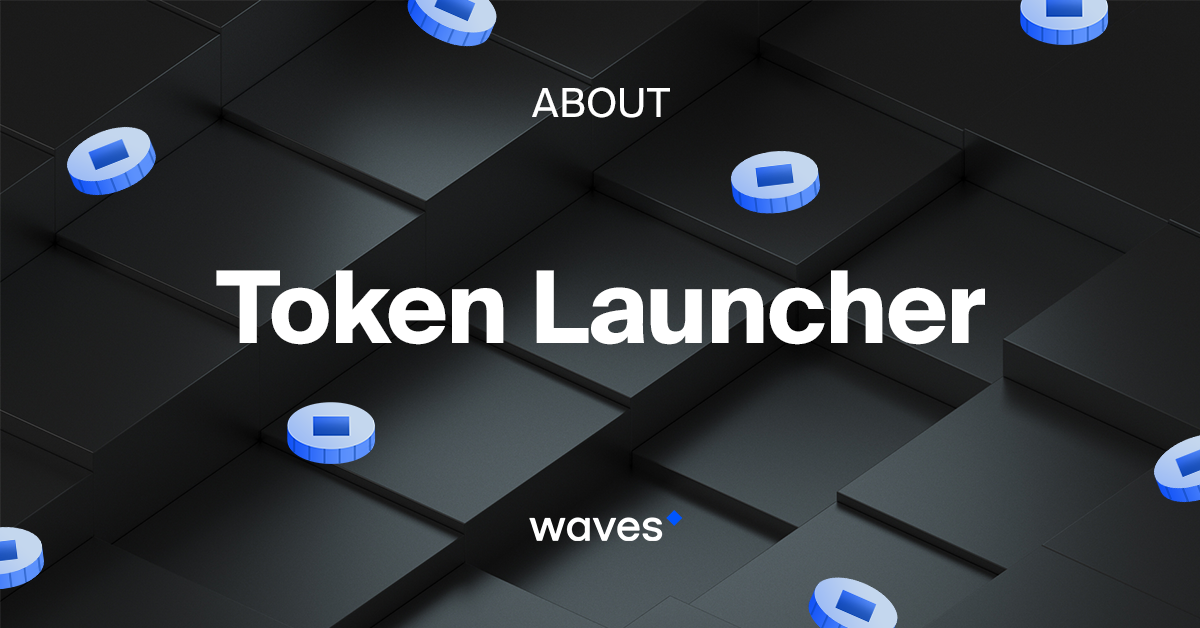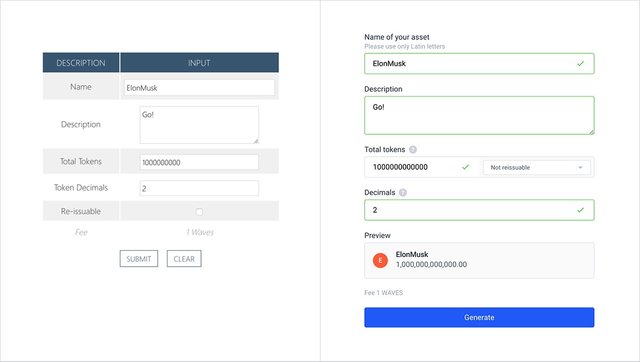How the Waves token launcher is different from other platforms

Token creation is faster, simpler and costs less than on other platforms, with tokens immediately tradable on the built-in decentralised exchange. In the coming weeks we will be making further improvements to the interface and adding even more functionality.
Waves was designed to address the shortcomings of existing blockchains, with custom token creation and management its number one priority. Whilst there are several blockchain platforms that allow users to create custom tokens, these all have various flaws for mainstream users. Waves offers a number of significant benefits, making blockchain tokenisation a truly grassroots movement:
- No smart contracts are required
- Anyone can create a token: no programming experience is needed
- Consequently, no code audit is required, minimising overheads
- No maintenance or monitoring is needed
- Tokens can be launched in under a few seconds
- It costs just 1 WAVES to launch a new token
- Tokens can be traded immediately on Waves’ integrated decentralised exchange
Updated token launcher
The Waves team has updated the token launcher with a new interface and new functionality.

In the coming fortnight we will be including token burning and additional token issuance to the UI. Later this year, a mass-distribution function will be added, allowing issuers to send their tokens to many addresses at once. This will then be complemented with displays for various token statistics, and further functionality to allow issuers to engage with their token holders.
Token issuance guidelines
Here are a few pointers to follow when creating a new token:
Name. For a token to be really popular, it’s best if there is already a large and active audience for it. The name of the token should be chosen so that it will be immediately recognisable and easy to associate with the person, service or project issuing it.
Description. It’s worth stating briefly and clearly in the description field how the token will be used. Include a link to the website or social network page of the person or project. Note that neither the title nor the description of the token can be changed in the future.
Supply. The total number of tokens to be created depends on the goals of the issuer and the model for the token. In future, it will be possible to reduce the number of tokens released by using the burn function (this only applies to tokens held within the issuer’s account, of course). If the token is designated as ‘Reissuable’ at creation, then further issuance will be possible. With each additional release of tokens, there is the option to change the token type to ‘Not reissuable’, so no further issuance will be possible.
Decimals. The issuer can specify how divisible the token will be. The maximum number of decimal places is eight. Having a larger number of decimal places allows greater scalability in case of high demand. If ‘0’ is specified in this field, the token can only be sold or transferred in whole numbers. If the token is somehow to be valued in fiat-equivalent prices (e.g. USD, CNY), then it will probably make sense to specify ‘2’ in this field.
Speed
After the implementation of Waves-NG technology, the platform became the fastest open blockchain in existence. Once all fields have been filled out, the token is created in just a few seconds and can immediately be traded on Waves’ decentralised exchange (DEX). Tokens can be found on the DEX using their unique asset id.
Thanks to the interface and technology behind the Waves platform, token creation is extremely fast and convenient, and can be carried out by anyone.
Token use cases
There are many use cases for blockchain tokens, from issuing a personal token as a gift or tokenising the services of a single person through to the tokenisation of a large business or conducting a multi-million-dollar crowdsale.
Tokens can represent a currency (such as the WUSD and WBTC tokens, which are backed 1:1 with US dollars and bitcoins respectively). They can be a kind of internal payment mechanism for an ecosystem, like the SMQ token that Simdaq uses on its community trading platform to give access to services and reward contributors. They can grant holders the right to access digital or real-world facilities, such as the token issued by the Primalbase shared office space network. They can even be used for personal or political initiatives. Boris Akimov, founder of the LavkaLavka farming collective, has launched a token that can be redeemed for his time and experience. Meanwhile, Larry Sharpe has recently created SharpeCoin on the Waves platform to use as a means to engage activists in his campaign for governor of New York.
Success for tokenised ventures is dependent on having a large and active audience, as well as reliable technology. The Waves ecosystem enjoys the support of an enthusiastic and engaged community, and there are a wide range of initiatives to help token issuers refine their model, promote and fund their initiative, and continue to support it after launch.
Join Waves Community
Join Waves News channel
Join Waves Twitter
Join Waves Facebook
Your Post Has Been Featured on @Resteemable!
Feature any Steemit post using resteemit.com!
How It Works:
1. Take Any Steemit URL
2. Erase
https://3. Type
reGet Featured Instantly � Featured Posts are voted every 2.4hrs
Join the Curation Team Here | Vote Resteemable for Witness